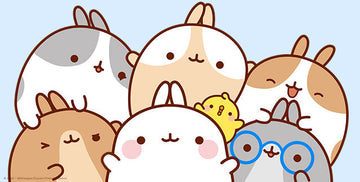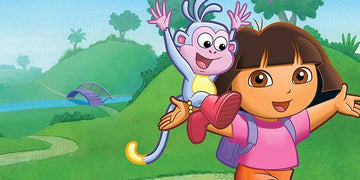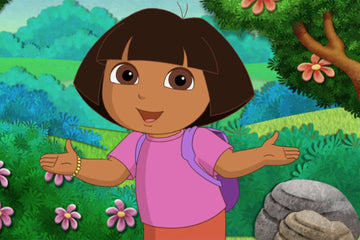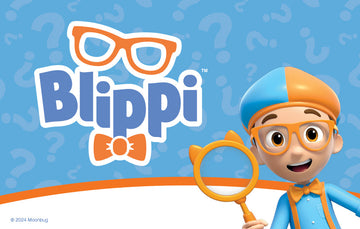Baby clothes have come a long way since their earliest days. In ancient times, infants wore simple garments made from natural materials like linen or wool. These early outfits were often designed for warmth and practicality, reflecting the needs of both the baby and the family.
The evolution of baby clothes mirrors changes in culture, technology, and family values. As societies progressed, so did the styles and functionalities of infant wear. From lace-trimmed dresses in Victorian times to modern, easy-to-change onesies, baby clothes serve not just to cover, but also to express identity and care.
Examining the history of baby clothes reveals how material culture shapes the early childhood experience. The choices in fabric, design, and functionality reflect broader societal values and norms, making the story of baby clothes an interesting glimpse into human development.
Origins and Early History
The history of baby clothes reveals how different cultures have cared for infants. Various practices arose throughout time, reflecting societal needs and available materials.
Infancy in the Middle Ages
During the Middle Ages, baby clothing consisted mainly of basic garments. Infants typically wore a simple gown made from linen or wool.
These gowns were long, allowing room for growth. The gowns provided warmth and were easy to put on and take off for diaper changes.
Layette sets included several gowns, along with swaddling blankets for warmth. Swaddling was common, as it helped soothe infants and keep them secure.
Swaddling Practices
Swaddling has ancient roots, practiced across many cultures. This method involved wrapping babies tightly in cloth to keep them secure.
In medieval Europe, swaddling was believed to promote healthy development. Parents thought it helped prevent limb deformities and allowed for better sleep.
Various swaddling techniques were used. Cloth sizes and wrapping styles changed based on local customs and available materials.
Swaddling blankets could be decorative, often embroidered or made from fine fabrics.
The Emergence of Recognizable Baby Clothes
As time passed, baby clothing evolved into more recognizable forms. By the late Middle Ages, different styles began to appear.
In addition to basic gowns, accessories like caps and shoes became common. Caps helped keep babies warm and were often made of soft fabric.
By the Renaissance, fashion influenced baby clothes. Soft colors and fabrics became popular, giving babies a more distinct look in society.
Tailoring for children started to develop, signaling a shift toward specialized baby clothing. Different cultures contributed unique styles, shaping the future of baby garments.
Evolution of Baby Clothes
The evolution of baby clothes has taken many forms over the centuries. Each era brought unique styles and innovations that shaped how infants were dressed. This section highlights key trends and practices from different historical periods.
Neoclassical Influences
During the neoclassical period in the late 18th and early 19th centuries, baby clothing reflected the simplicity associated with classical art. Families favored long clothes, which were easy to make and allowed for comfort. White cotton and linen were common materials, highlighting purity and innocence.
Children often wore garments similar to adults, emphasizing natural lines and draping. Additionally, the use of frocks became popular, symbolizing a shift toward more fashionable dressing for infants. These styles laid the groundwork for more complex designs seen in later years.
Victorian Innovations
The Victorian era, spanning the 19th century, saw significant changes in baby clothing. The designs became more elaborate, with an emphasis on function as well as style. This period introduced layers with petticoats and long dresses, allowing for warmth and ease of movement.
Victorians also embraced the concept of "breeching," which marked a transition in boys’ clothing. Boys wore dresses until about age five, after which they switched to shorter pants. This practice highlighted social status and the growth of a distinct children’s fashion.
The Introduction of Childrenswear
By the late 19th and early 20th centuries, dedicated childrenswear began to emerge. Manufacturers recognized the need for clothing specifically designed for children. This development led to tailored outfits for both boys and girls, moving away from adult styles.
Baby clothes included a range of options, such as short clothes for warmer weather and practical designs for daily wear. Innovations in fabric and manufacturing processes allowed for more variety. Bright colors and patterns became fashionable, making baby clothes a vibrant part of the market.
Twentieth Century and Beyond
The development of baby clothes in the twentieth century shows major shifts in styles, materials, and societal influences. These changes reflect new ideas about gender roles, youth culture, and environmental awareness.
Influence of Early 20th Century
In the early 1900s, baby clothes were often simple and functional. Most infants wore dresses, regardless of gender. The sailor suit became a popular choice, blending practicality with a bit of charm.
Baby clothes were typically handmade, with families often sewing their own items. As industrialization increased, ready-made layettes became available, providing convenience for new parents. These sets included dresses, gowns, and blankets, making it easier for families to prepare for a baby's arrival.
Fashion also started to reflect broader societal changes. The early 20th century saw a movement toward more relaxed and comfortable clothing for children, which began to challenge traditional norms.
Postwar Changes and Youth Culture Emergence
After World War II, baby clothes began to evolve rapidly. The rise of consumer culture influenced clothing styles. Playful designs like poodle skirts and bright colors became fashionable.
The baby boom led to an increased production of children’s clothing. Companies began to cater to parents looking for stylish, affordable outfits. With this growth, marketing targeted families, promoting specific gender roles in children’s fashion.
By the 1960s, youth culture emerged as a powerful influence. Fashion designers began creating clothes that reflected the interests of children and teenagers. This shift encouraged more individuality in baby clothes, moving away from the traditional matching sets.
Rise of Organic and Eco-friendly Materials
In recent decades, there has been a significant focus on sustainability in baby clothing. Parents started seeking organic cotton and eco-friendly materials. These fabrics minimize environmental impact and are safer for babies.
Manufacturers began producing clothes without harmful chemicals. This trend also supported labor rights and fair trade practices. Families became more aware of how their choices affect the planet.
Today, many options exist that combine style with environmental responsibility. The emphasis on organic materials reflects a broader cultural shift towards health and sustainability. Parents are more informed and focused on providing safe products for their children.
Modern Trends in Baby Clothing
Today’s baby clothing reflects changing ideas about gender, fashion, and technology. Designers focus more on comfort and practicality, while also considering the important role of societal norms.
Towards Unisex and Gender-Neutral Designs
Many brands are now offering unisex and gender-neutral clothing for infants. This trend breaks traditional color codes, reducing the use of pink for girls and blue for boys.
Rompers, onesies, and accessories come in a wider variety of styles. For instance, earthy tones, patterns, and prints appeal to various tastes.
Parents often seek clothes that avoid reinforcing strict gender roles. They prefer outfits that can be worn by any baby, regardless of gender.
The Influence of Children's Fashion
Children’s fashion has grown in importance, influenced by adult fashion trends. Designers are creating cute, stylish options that mimic adult styles.
Baby girls and boys can wear similar styles that reflect current trends. This includes everything from patterns to playful graphics.
Styles like oversized hoodies and trendy sneakers are becoming popular for babies. These choices allow parents to express their own fashion sense through their children’s outfits.
Technology and Childrenswear
Technology plays a big role in modern baby clothing. Smart fabrics that wick away moisture or are stain-resistant gain popularity.
Parents appreciate practical features like adjustable sizes that grow with the child. Infants may wear clothing that adapts to fit their shape over time.
Eco-friendly materials are also becoming more common. Parents are interested in sustainable options that are safe for their babies and the environment.
These innovations make dressing babies easier and more enjoyable for parents.
Cultural Significance and Material Culture
Baby clothes carry deep cultural meanings and reflect societal norms. They are not just functional but also serve as a way to communicate values, expectations, and individuality in early childhood.
Clothing as a Reflection of Societal Norms
Baby clothing often mirrors the values and norms of the society in which they are made. For instance, embroidery and lace were once popular in many cultures, symbolizing wealth and status. Today, clothing choices have become more relaxed, reflecting modern values of comfort and practicality.
Parents often choose outfits that showcase their cultural heritage. Traditional garments may be worn during festivals or important events. This practice highlights the importance of cultural identity in child-rearing. Clothing serves as a canvas to express family traditions, societal expectations, and even personal beliefs.
The Role of School Uniforms in Child Rearing
In many places, school uniforms start at a young age. These uniforms establish a sense of belonging among children. They promote equality and reduce peer pressure related to clothing. By dressing alike, children focus more on learning rather than fashion.
School uniforms also play a role in developing discipline and responsibility. Students learn to take care of their uniforms, fostering habits that carry over into adulthood. The choice of materials for uniforms—often durable and easy to clean—addresses both practicality and cultural expectations around education and childhood.
Baby Fashion as a Societal Phenomenon
Baby fashion has transformed into a significant societal phenomenon. Today’s parents often prioritize style as much as comfort. Trendy outfits can be seen on social media, influencing choices for baby clothes.
This cultural shift highlights the importance of baby fashion in expressing creativity and individuality. Brands often use vibrant colors, patterns, and unique designs to attract parents. The material culture of early childhood now includes a wide variety of outerwear options that are both functional and fashionable.
Overall, the industry reflects and shapes societal expectations surrounding parenting and childhood. Baby fashion is now an important part of parenting, as it reflects both personal style and cultural values.





